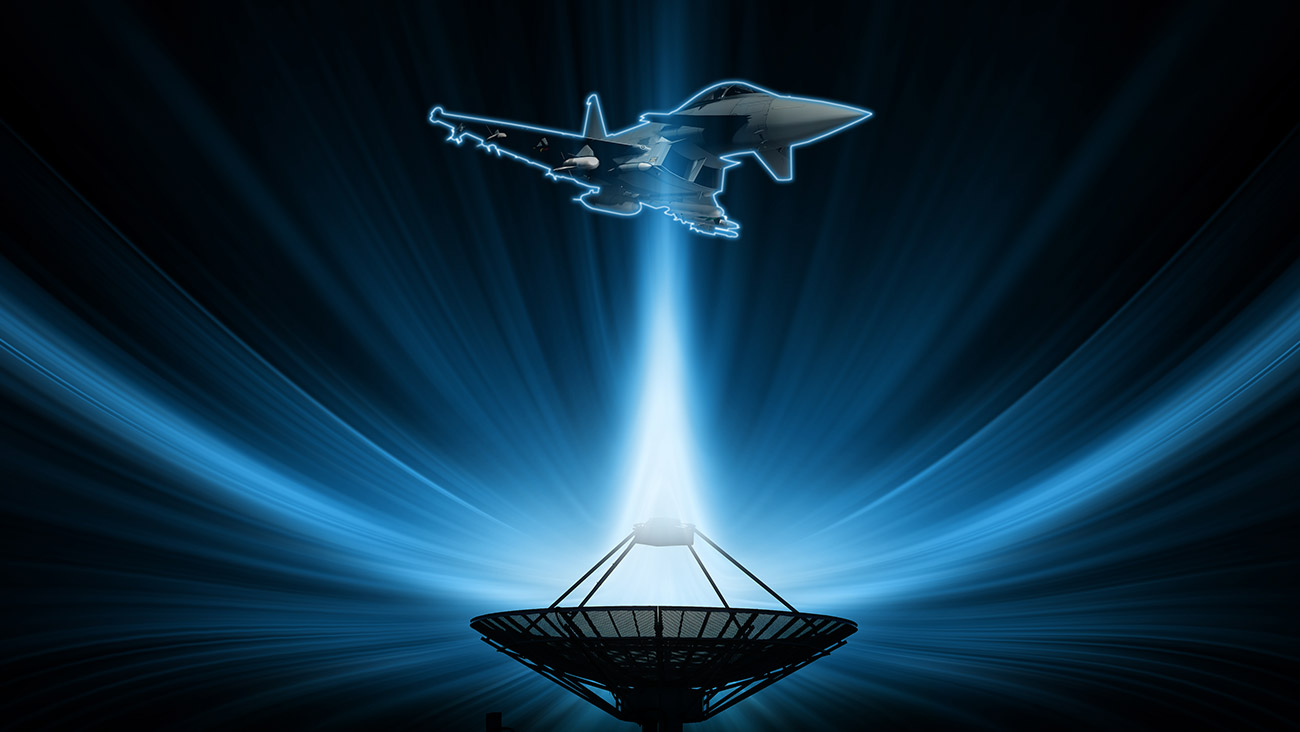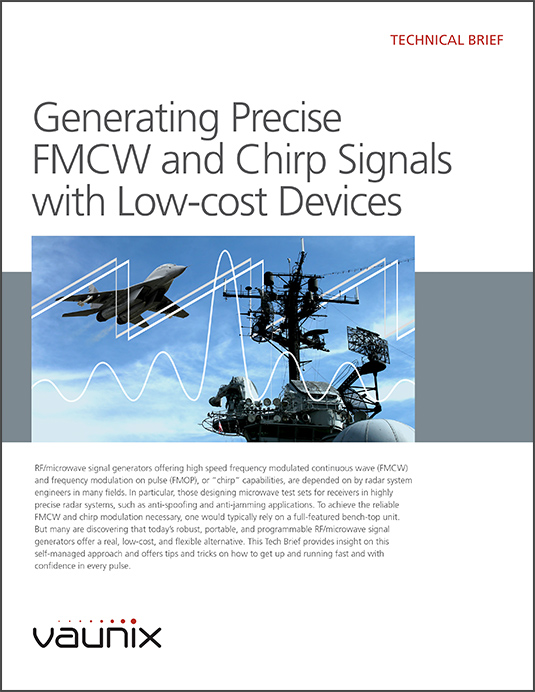How to set up radar testing with FMCW and chirp capability using low-cost programmable RF signal generators

FMCW and chirp (pulsed linear frequency modulated) radar are some of the most common radars used globally. These types of radar are designed for electronic warfare (EW) and defense, as well as a variety of commercial aerospace applications. In the case of defense, FMCW and chirp signals are commonly used in terrain-following radar for under-the-radar flying, surveillance, and for targeting systems. For civilian uses, FMCW and chirp radar are seen in advanced driver assistance systems (ADAS), autonomous vehicles, radar altimeters, air-traffic control, marine navigation radar, oil/LNG storage tank level measurements, and for weather. Common FMCW and chirp radar operate in the C-band (4 GHz to 8 GHz), X-band (8 GHz to 12 GHz), and Ku-band (12 GHz to 18 GHz). However, there are many modern radar that operate well into the millimeter-wave bands, such as 77 GHz automotive radar. (Vaunix's Lab Brick model LMS-183CX offers chirp signal capabiities from 6 GHz to 20 GHz, or C-, X-, Ku- and K-band.)
The use of frequency modulation (FM) and FM pulsed radar provides improved performance over simple continuous wave (CW) or unmodulated pulsed radar, respectively. Chirp radars use linear FM signals that are pulsed and may also employ pulse compression techniques to overcome some of the limitations of non-compressed pulse radar requiring very high peak power levels and short pulse lengths. Like FMCW radar, chirp radar can be used to distinguish multiple targets in proximity or amongst clutter, and also provide good range resolution using lower power solid-state amplifiers as opposed to vacuum tube, or more complex solid-state, high-power amplifiers (HPA).
In order to test the digital and RF hardware that transmits, receives, or processes FMCW and chirp radar, a signal generator that has FMCW or chirp modulation capability is needed. Moreover, the signal generator needs to be able to reach the operating frequencies of the radar components. Other aspects of signal generator performance, such as noise, phase noise, and harmonics are also critical as radar are highly sensitive measurement instruments. Signal generators with good performance can also be used as an LO source during testing of radar that require upconversion/downconversion.
Signal generators, along with spectrum/signal analyzers can be used to test the radar transmitter hardware, while generally only a signal generator is needed to test the radar receiver hardware if the remaining conversion and processing circuitry isn’t also under test. Signal generators are often used to perform signal-to-noise ratio (SNR) tests on radar receiver circuitry, as signal generators are able to provide calibrated power and noise values and the added noise level of the radar system can be determined. SNR is an important measurement for radar receivers, as it dictates the maximum range (lowest power) of the radar sensor.
Even with modern radar that rely on direct-digital-synthesis (DDS) and direct-digital-conversion (DDC) technology along with digital signal processing (DSP) circuits specifically designed for radar, FMCW and chirp signal generators are valuable for testing radar circuitry, as the RF hardware of these radar is essentially the same as earlier radar, though possibly with less frequency conversion stages. Even the latest array radars with a large number of transmit/receive modules (TRMs) and antenna elements essentially operate in the same way, just with more RF hardware are more substantial digital processing systems.
Given the use cases of modern radar, servicing and testing them can pose significant challenges, as the environments these radar are used on (land, air, and naval platforms) are often remote or mobile supply/servicing stations. In ideal laboratory testing conditions with ample space for typical bench-top signal generators, there are far less challenges associated with testing radar. However, extracting a damaged or malfunctioning radar and shipping the radar to a qualified laboratory may incur more troublesome costs and delays than field servicing the radar unit would. Hence, there is a need for low-cost, rugged, and portable signal generators that can be used to field service and test modern radar. Moreover, if many of these compact signal generators can be programmed and used in tandem while synchronized, they could also be used to test array radar more effectively and rapidly.
FMCW and FM Radar Benefits
- Wider bandwidth/better range resolution
- Lower power solid-state components may be used to reduce cost and complexity
- Relatively simple circuitry
- Multi-target discrimination is possible
- Good accuracy
FMCW Radar Range Resolution as a Function of Bandwidth
| Bandwidth (MHz) | Resolution (m) |
|---|---|
| 0.05 | 3000 |
| 0.1 | 1500 |
| 0.5 | 300 |
| 1 | 150 |
| 2 | 75 |
| 5 | 30 |
| 10 | 15 |
| 100 | 1.5 |
| 1000 | .15 |
| 10000 | .015 |
Modern Radar Key Performance Goals
- Range
- Resolution
- Accuracy
- Dynamic Range
- Multi-input Multi-output/Polarimetric channels orthogonality
- Low probability of Intercept
- Low probability of detection
- Low interference
- High transmitter exploitation, or low/unitary crest factor
- Low sidelobe level of the autocorrelation of the transmitted pulse
Advantages of Pulse Compression
- Enables use of solid-state power amplifiers
- Lower pulse power
- Enhanced range resolution
- Enhanced maximum range
- More challenging to detect
- Improved jamming immunity
Vaunix has released a TECH BRIEF on this topic, which illuminates readers of the challenges associated with testing/servicing FMCW and chirp radar and how our Lab Brick Signal Generators can be used as a low-cost and high-capability solution to these RF signal generation challenges.




